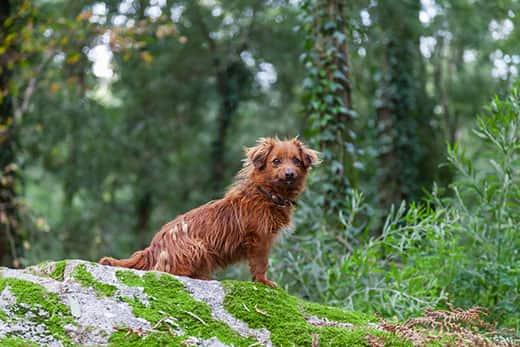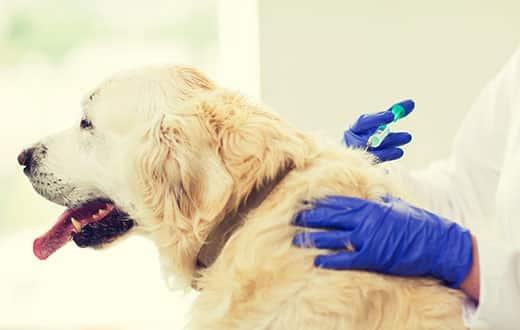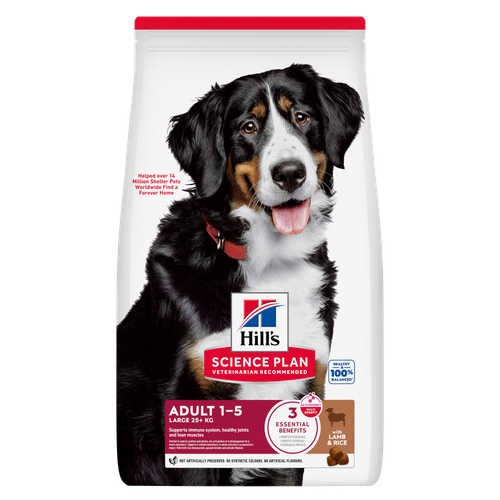
-
Find the right food for your petTake this quiz to see which food may be the best for your furry friend.Find the right food for your petTake this quiz to see which food may be the best for your furry friend.Featured products
 Small & Mini Mature Adult 7+ Dog Food
Small & Mini Mature Adult 7+ Dog FoodHill's Science Plan Small & Mini Breed Mature Adult Dog Food with Chicken is a complete pet food, specially formulated with ActivBiome+ Multi-Benefit Technology.
Tailored nutrition to support graceful ageing in small dogs. Specially made with a synergistic blend of nutrients for energy & vigor.Shop Now Perfect Digestion Large Breed Puppy Food
Perfect Digestion Large Breed Puppy FoodPrecisely balanced nutrition with Hill's ActivBiome+ prebiotic blend actively contributes to supporting digestive health and overall well-being to help your pet feel their best
Shop Now Perfect Digestion Small & Mini Adult Dog Food
Perfect Digestion Small & Mini Adult Dog FoodHill's Science Plan Perfect Digestion Small & Mini Breed Adult Dog Food with Chicken & Brown Rice supports ultimate digestive well-being & a healthy microbiome.
Shop NowFeatured products Kitten Food
Kitten FoodTender chicken chunks in gravy for kittens, with omega-3s for healthy eye & brain development and high-quality protein to support muscle growth. With balanced minerals to promote strong bones & teeth.
Shop Now Hypoallergenic Dry Cat Food
Hypoallergenic Dry Cat FoodHILL'S SCIENCE PLAN Hypoallergenic Adult cat food with egg & insect protein is a complete pet food for adult cat 1–6 years old. It's formulated for cats with delicate skin and stomach, with limited high quality novel protein sources & no grain.
Shop Now Hairball & Perfect Coat Adult Cat Food
Hairball & Perfect Coat Adult Cat FoodHill's Science Plan HAIRBALL & PERFECT COAT Adult cat food with Chicken is specially formulated to effectively help avoid hairball formation in adult cats while promoting a beautiful coat. Thanks to its mix of essential Omega-6 fatty acids, this food benefits the cat's skin and fur keeping them healthy and shiny. Our Advanced Fibre Technology helps reduce hairballs by naturally promoting their passage through the gut. This food is formulated with high-quality protein for a perfectly balanced, great-tasting recipe.
Shop Now -
Dog
- Dog Tips & Articles
-
Health Category
- Weight
- Food & Environmental Sensitivities
- Urinary
- Digestive
- Joint
- Kidney
-
Life Stage
- Puppy Nutrition
- Adult Nutrition
- Senior Nutrition
Cat- Cat Tips & Articles
-
Health Category
- Weight
- Skin & Food Sensitivities
- Urinary
- Digestive
- Kidney
-
Life Stage
- Kitten Nutrition
- Adult Nutrition
Featured articles Understanding Your Pet's Microbiome
Understanding Your Pet's MicrobiomeLearn what a pet's microbiome is, how it contributes to your pet's gut & overall health, and why nutrition is important in maintaining healthy microbiomes.
Read More Pet Food Storage Tips
Pet Food Storage TipsWhere you store your cat and dog food can make a big difference in the quality and freshness once it is opened. Here are some common questions and recommendations for optimal storage for all of Hill’s dry and canned cat and dog food.
Read More The Right Diet For Your Pet
The Right Diet For Your PetLearn what to look for in healthy pet food & nutrition, including ingredients, quality of the manufacturer, your pet's age, and any special needs they have
Read More -


Rabies is a word that can — and should — elicit concern: it's a highly contagious disease that both dog and cat parents should not ignore. As a fatal virus that kills nearly 60,000 people worldwide on a yearly basis, according to the CDC, it presents concerns for you and your family as well. Even dog owners in urban environments should learn the signs of rabies in dogs. Cats are certainly not exempt from the perils of contracting rabies, as they are the domestic animal most frequently diagnosed with rabies in the U.S., explains the American Veterinary Medical Association. This may be due to less stringent local laws surrounding rabies vaccinations for cats than dogs.
The Rabid Dog: How Does a Dog Get Rabies?
Rabies is found in many species of wildlife — with breeding grounds of infection in bats, skunks, foxes and raccoons. As human populations grow and encroach further onto undeveloped land, the exposure risk increases for dogs and people.
Rabies can be passed from any infected warm-blooded animal to another, most often through the bite of an infected animal, though scratches pose a small possibility of transmission.

How is Rabies Transmitted to Humans?
Rabies is transmitted to humans almost entirely through bites from rabid animals, although contamination of open wounds or mucous membranes with saliva from a rabid animal could potentially cause exposure.
Each year in the U.S., between 30,000 and 60,000 people seek post-exposure treatment, according to the CDC. The good news is that treatment for people is very effective when it is initiated quickly. Don't take this as an excuse to let your guard down around this virus. Once the rabies virus reaches the nervous system, there is no cure, making prompt medical care a life-saving necessity.
The best way to protect yourself and your dog from the dangers of the rabies virus is to vaccinate your dog against rabies. Rabies is very preventable!


Tasty Tips
What are the Symptoms of Rabies in Dogs?
A rabies infection occurs in phases, first causing a variety of marked changes in temperament. There are no strict rules for this phase, but a dog with a sudden personality change is a clue that rabies may be responsible.
Following this temperament change, there are two recognized forms of rabies:
- Furious rabies is typically characterized by the dog having a voracious appetite, even eating nonfood items such as stones and dirt. The dog eventually will become paralyzed, unable to eat or drink. Death usually follows violent seizures.
- Dumb or paralytic rabies is the form in dogs people often associate with salivating, rabid dog imagery. This form involves progressive paralysis as well. The dog's face may distort and swallowing may appear to be a struggle. For this reason, you should exercise caution around any animal that appears to have something stuck in its mouth or throat. Attempting to pry the mouth open of an infected animal can result in the transmission of rabies. With dumb rabies, the dog lapses into a coma and death follows.
Did you know? Fear of water is not a sign of rabies in dogs but is instead a sign of rabies in people.
How Long Does It Take for Rabies to Develop?
The incubation period, or the amount of time from bite to clinical signs of rabies, can vary from mere days to six months or more. In dogs, this period is typically two weeks to four months, with death occurring one to two weeks after signs begin.
The speed at which signs of rabies in dogs develops varies if the dog has any existing immunity to the virus (such as a previous, even outdated vaccine or immunity passed down from the mother) and the bite itself. Severe and extensive bites typically transmit more of the virus, accelerating the period from infection to clinical signs.

What Is the Treatment for a Dog With Rabies?
Sadly, there is no available treatment for a rabid dog. Veterinarians are required by law to notify the local and state animal disease regulatory authorities. If a dog was previously vaccinated, the vet will likely recommend a prompt booster of the rabies vaccine.
Vaccinations & Preventing Rabies in My Dog
- Take pets to a vet or vaccine clinic for a rabies vaccine. Vaccines are available for dogs, cats, and even ferrets. Keeping your dog's vaccinations are essential for keeping them from getting rabies, but they are also required by law.
- Avoid contact with wildlife under all circumstances, dead or alive. Animals can shed the virus through saliva up to two weeks before any signs of rabies begin and can remain in the body's tissues shortly after death.
- Minimize the chance your pets will have contact with wildlife. Keep your dogs on leashes and supervise them when outdoors. Covering outdoor garbage will help avoid attracting wildlife. Rabies is a public health concern, and resources are in place to help keep wildlife away from our domestic pets. Call animal control when you notice stray animals or wildlife.
If given before the virus enters the dog's nervous system, rabies vaccines are extremely safe and effective. Despite good measures to avoid exposure, though, contact with rabid animals can still occur. Remember, animals infected with the rabies virus shed the virus before any abnormal signs of illness occur, making vaccination for your pets crucial.
If you suspect your dog may have been exposed to rabies, bring them to a vet immediately. If your dog is unprotected against rabies, there is no time like the present to schedule a vet appointment.


Dr. Laci Schaible is a small animal veterinarian, veterinary journalist, and a thought leader in the industry. She received her Doctor of Veterinary Medicine from Texas A&M University and her Masters in Legal Studies from Wake Forest University.
Related products

Hill's Science Plan Perfect Digestion Small & Mini Breed Adult Dog Food with Chicken & Brown Rice supports ultimate digestive well-being & a healthy microbiome.

Hill's Science Plan Small & Mini Breed Mature Adult Dog Food with Chicken is a complete pet food, specially formulated with ActivBiome+ Multi-Benefit Technology.
Tailored nutrition to support graceful ageing in small dogs. Specially made with a synergistic blend of nutrients for energy & vigor.

Hill's Science Plan Large Breed Adult Dog Food with Lamb & Rice is a complete pet food, specially formulated with ActivBiome+ Multi-Benefit Technology.
This food is specifically designed to fuel the energy needs of large breed dogs during the prime of their life.

Precisely balanced nutrition with Hill's ActivBiome+ prebiotic blend actively contributes to supporting digestive health and overall well-being to help your pet feel their best
Related articles

Dog obesity is a significant problem - learn more about helping your dog become trimmer and healthier through improved nutrition.

Discover how the field of dog science is giving us more and more insights into the inner workings of our furry best friends.

Discover the causes, signs, and treatments of kidney disease in dogs and find methods of supporting your dog's kidney health. Learn more at Hill's Pet South Africa.

Learn about snake bites on dogs, including clinical symptoms to look for, what to do if you think your dog was bitten, and treatment & prevention options.

Put your dog on a diet without them knowing
Our low calorie formula helps you control your dog's weight. It's packed with high-quality protein for building lean muscles, and made with purposeful ingredients for a flavorful, nutritious meal. Clinically proven antioxidants, Vitamin C+E, help promote a healthy immune system.
Put your dog on a diet without them knowing
Our low calorie formula helps you control your dog's weight. It's packed with high-quality protein for building lean muscles, and made with purposeful ingredients for a flavorful, nutritious meal. Clinically proven antioxidants, Vitamin C+E, help promote a healthy immune system.

